If there was one thing the Pivot Switchblade didn’t have, it was an easy life: With a total of 1,000 km and more than 100,000 metres of elevation, our test rider Gregor gave it a hard time in bike parks and on longer tours. After a full year of shredding, it was high time to draw a conclusion.
On paper, the Pivot Switchblade makes a powerful impression. At first glance, the geometry seems to be well balanced, and the choice of wheel size is left up to the rider. As a result, the range of application can be adapted to suit almost any riding style. Perfect for Gregor, who enjoys a day of uplifts in the bike park as much as he enjoys long days of classic trail riding.

The Pivot Switchblade in detail
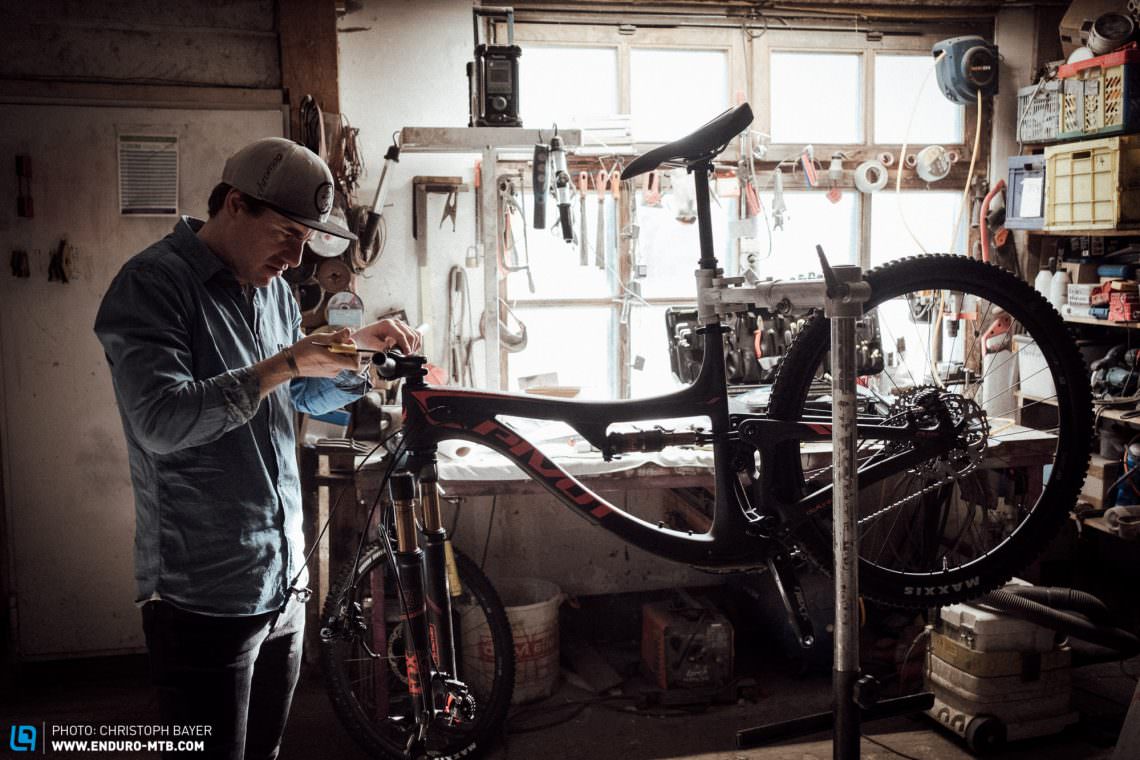
If there is one thing that keeps Gregor up at night, it’s a messy cockpit. Thankfully, the Switchblade is as clean as a freshly polished parquet floor: each cable is neatly routed through the frame and clamped into place so that the cables don’t rattle inside the frame on even the roughest trails. Besides pleasing neat-freaks, the Pivot Switchblade will also appeal to those who pay close attention to the details. The suspension linkage of the rear end isn’t only beautiful; Pivot uses the same bearings for every pivot point. In this way, the bearings are a lot more durable, and their uniformity makes it much easier to get replacements when eventually needed. Another feature is the enormous amount of tyre clearance the frame has with 29″ wheels installed, which is due to the compatibility with 27.5+ tyres.
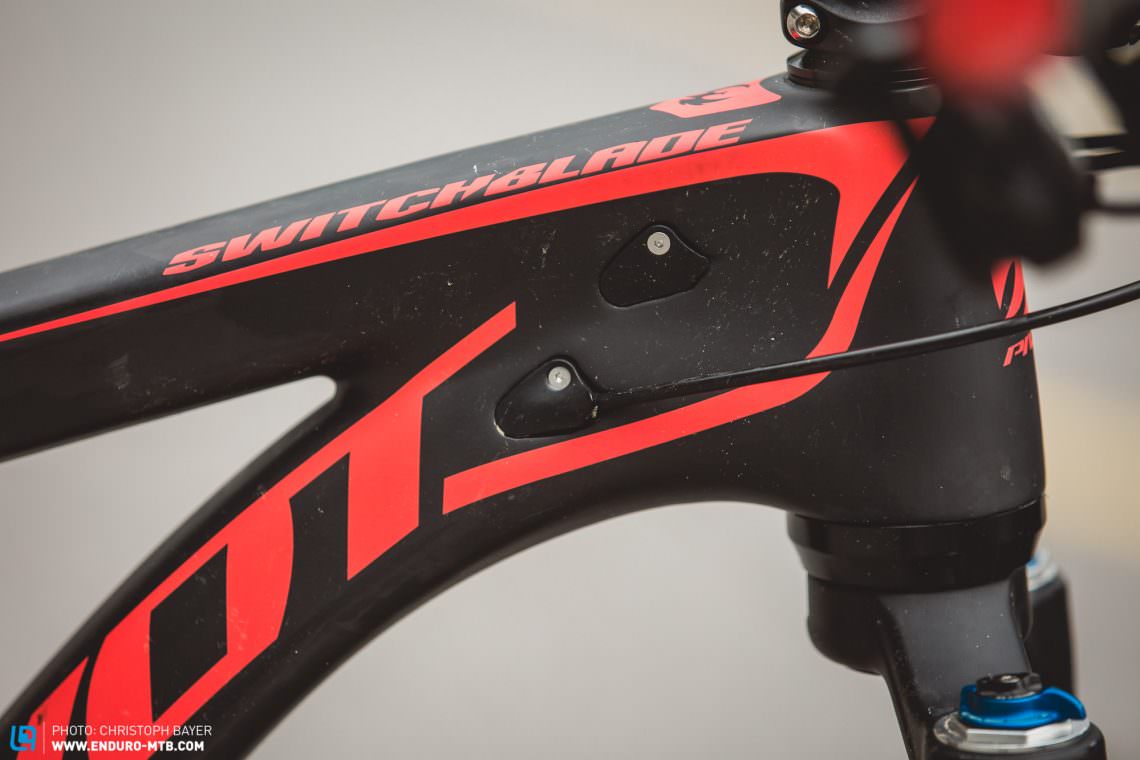

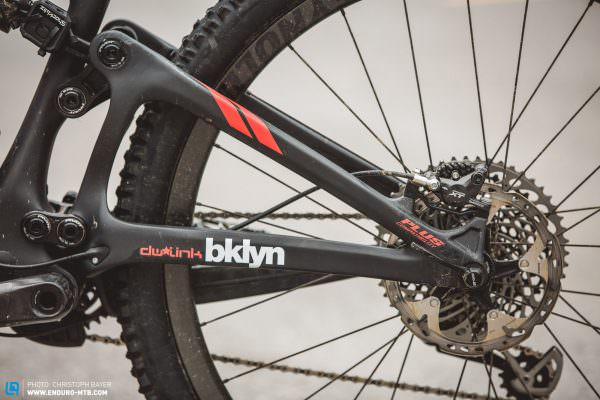
The Pivot Switchblade comes with two different bearing cups for the headset to compensate for the difference in height between 27.5+ and 29″ wheels. However, the 10 mm taller bearing up can also be used with 29″ wheels, making the head angle slacker and increasing the stack height.
The Pivot Switchblade on the trail
Gregor’s hitherto unspoken suspicion that the Pivot Switchblade belongs to the more compact type of mountain bikes confirmed itself on the first few meters. But it wasn’t noticeable in a negative way, as Gregor, measuring 182 cm, felt comfortable enough using a 40 mm stem on the size L frame. As soon as the road turned uphill, the Switchblade proved its abilities as a climber. If you push the saddle forward a few centimetres, you’ll find yourself sat very centrally on the bike and able to cover a decent amount of elevation comfortably. On asphalt, you can feel a slight rocking sensation in the DW-Link if you’ve got the shock fully open. Fortunately, if you find this distracting, engaging the platform damping of the FOX FLOAT DPS shock will very effectively suppress any rocking. What annoys some people on smooth hard packed surfaces is a blessing when you heed off-road and the climbs turn steep and technical. Leaving the platform damping in the open position, you will profit from an almost infinite amount of grip, conquering passages where you would usually have had to shoulder the bike.

Descending, the Switchblade reveals a side of its character you wouldn’t not have thought possible when you looked at it on paper. Whether on playful single track or fast downhills, as long as you’re not racing in Fort William, the 135 mm of travel never seems to reach its limits. Even the newly built downhill track in the bike park in Oberammergau didn’t raise any doubts about the downhill capabilities of the Switchblade. Thanks to the FIT-4 cartridge, the FOX 36 Factory fork can be meticulously tuned to suit any kind of terrain.
Although I had more testbikes with me in Saalbach, I always wanted to get back on the Switchblade.

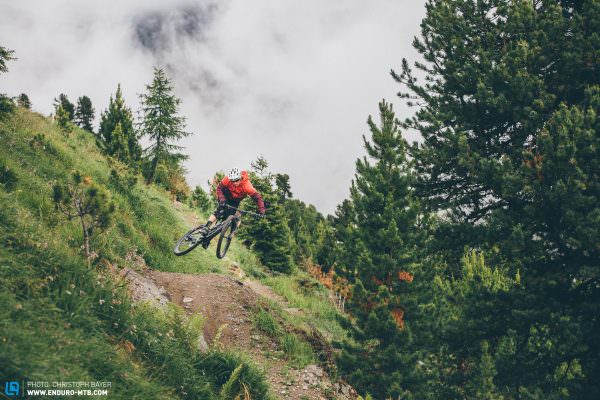
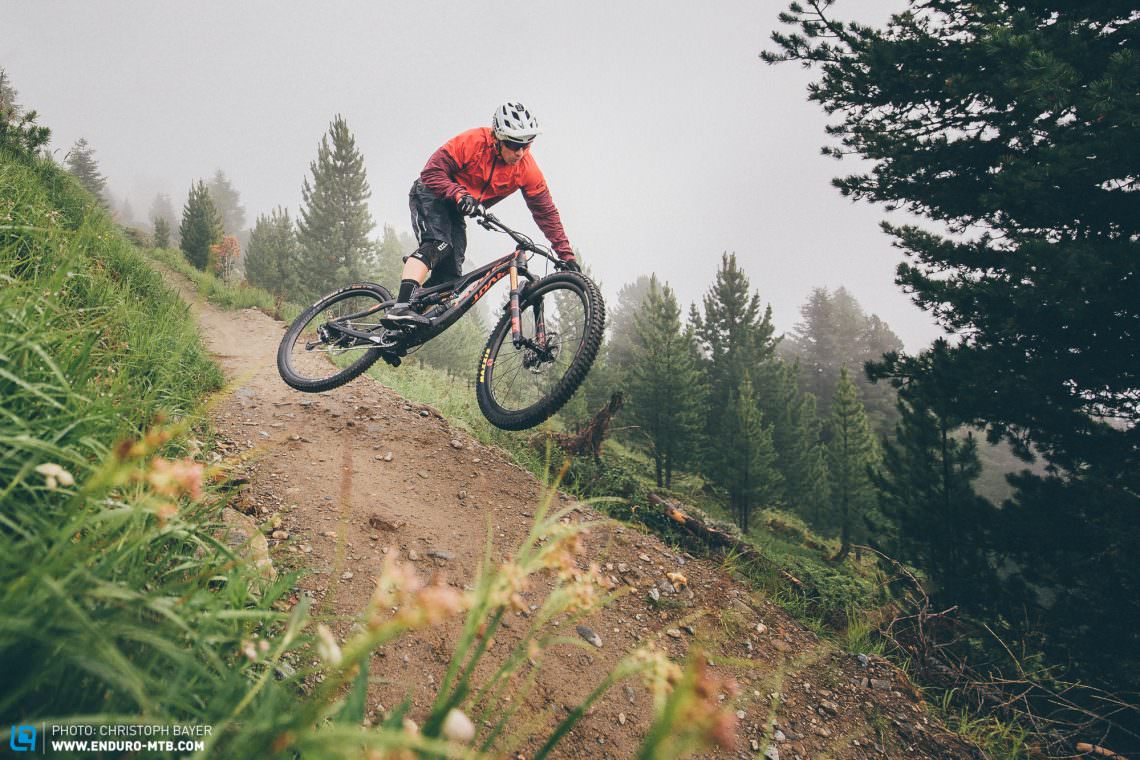
If you want proof of how fast the Pivot Switchblade is, just look at the current Strava KOM leaderboard of the Flow-Country segment at the Geisskopf bike park in Bischofsmais. ?

The stiff carbon frame and the MAXXIS 3C tyres create an explosive mixture that allows the Switchblade to shoot over trails like a rocket. However, we noticed two particular weak spots on the Switchblade: in steep terrain, the angle of the head tube becomes noticeable, which could easily be 1° slacker. Not even the 10 mm taller bearing cup is enough to compensate for the steep head angle. Also, the standard DT Swiss XM421 rims are too soft for a bike that is as capable as the Switchblade on the descents. Which is why Gregor’s Pivot now features a 29″ Reynolds Enduro carbon wheelset instead.









